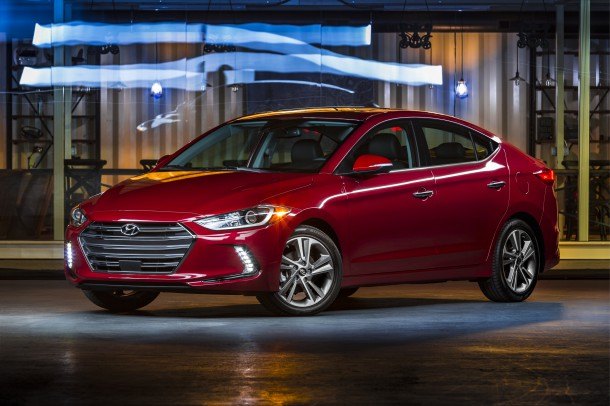QOTD: Refresh, or Revolt?

A change is gonna come, the song goes, and it may as well be playing for all cars popular enough to avoid an abrupt discontinuation two or three years after their launch. Those sorry rides never got a chance to spawn a second generation or undergo a styling change. For the vast majority of car models, however, a design refresh halfway through a development cycle is the norm.
Be it a barely noticeable tweak or a full-on face transplant, rare is the OEM that doesn’t toss out a few bucks to make an older car look newer (or at least different). Different, it should be noted, does not always mean better. Sometimes the operation fails. Unlike a face transplant, in this scenario it’s other people who reject the new tissue.
It might not shock you to learn the inspiration for this QOTD: the 2019 Hyundai Elantra — the worked-over, triangle-obsessed successor to what was, in my jaundiced view, a very handsome model. You might have seen it in our Ace of Base post yesterday.
When the sixth-generation Elantra appeared for the 2016 model year, applause greeted Hyundai’s decision to ditch the soft-serve styling of the fifth-gen for a wider, meaner look. Suddenly, the Elantra was a serious car. The broad grille, thin vertical vents, and narrow headlights gave the model an aura of menace that its low-torque 2.0-liter couldn’t hope to back up. Hell, I stopped on the street the other night to admire a black model with fresh snows and steelies.
A carriage for economy-minded mobsters, bless its little heart.
Then came the 2019 model, which looks like it accidentally ran through a series of mirrors and plate glass windows. Someone put pressure on those wounds! It’s quite the opposite of the 2018 Sonata, which vastly improved upon the deadly dull countenance of the new-for-2016 seventh-gen sedan.
Yes, eye of the beholder, and all that. I’m the guy who thinks the bland-as-boiled-potatoes 2016-2018 Lexus ES wears its massive spindle grille well, so there’s no telling where personal opinion might fall on a particular model. Take a shot, B&B.
Which mid-cycle refresh turned a looker into a homely dog?
[Images: Hyundai]

More by Steph Willems
Latest Car Reviews
Read moreLatest Product Reviews
Read moreRecent Comments
- Flashindapan Beautiful color combinations. I assumed they stop selling the TT here at least five or six years ago.
- Carson D Just don't be the whistleblower who reports on the falsification of safety data. That's a deadly profession.
- Carson D I'd have responded sooner, but my computer locked up and I had to reboot it.
- Todd In Canada Mazda has a 3 year bumper to bumper & 5 year unlimited mileage drivetrain warranty. Mazdas are a DIY dream of high school auto mechanics 101 easy to work on reliable simplicity. IMO the Mazda is way better looking.
- Tane94 Blue Mini, love Minis because it's total custom ordering and the S has the BMW turbo engine.




































Comments
Join the conversation
Did anyone noticed that Fusion was also updated for 2017 and a bit more in 2019?
A couple of standout uglies in my book: 2004-ish GMT800 Silverado, wherein GM took their excellent evolution of the GMT400 and went for angry instead (why?) but actually hit squinty. 2013-ish Grand Cherokee, wherein Chrysler finally addressed the godawful gearing, and also addressed that their bold American truck (SUV, whatever) looked like a bold American truck instead of an Audi. 2015-ish Chrysler 300, wherein Chrysler looked at what BHPH owners were doing to make their cars worse and made most of them factory standard. The 2011 was a classy car. This wasn't.